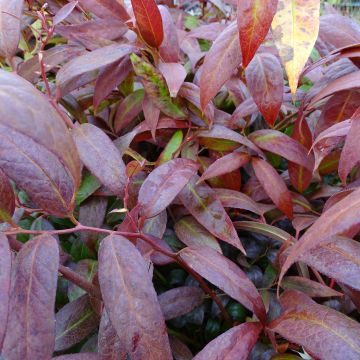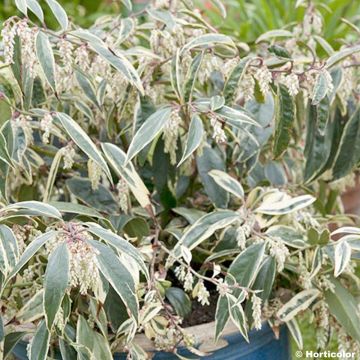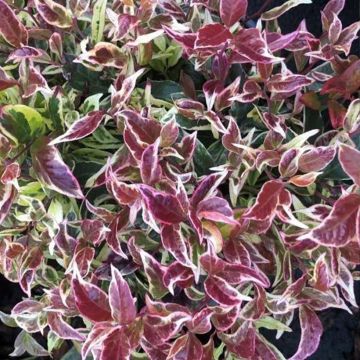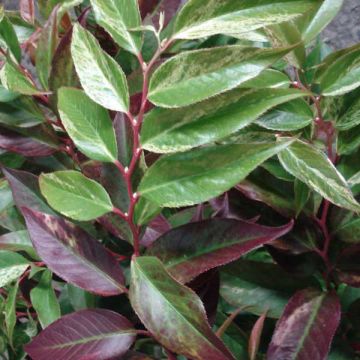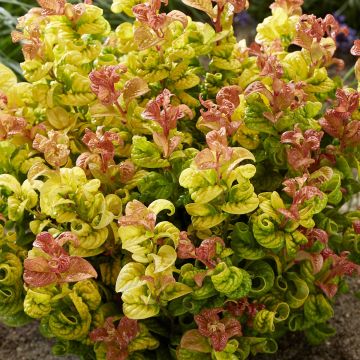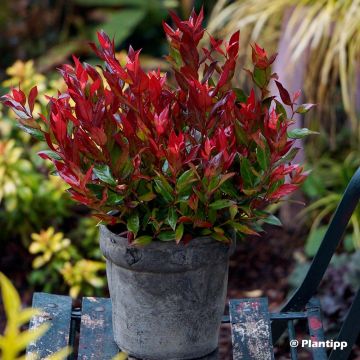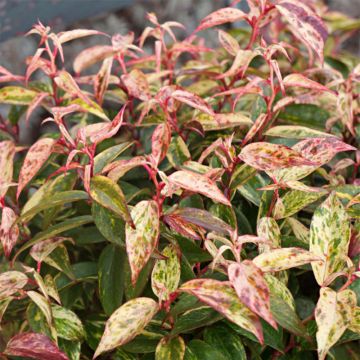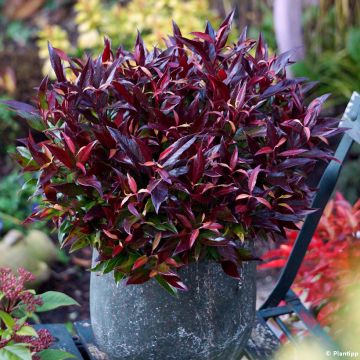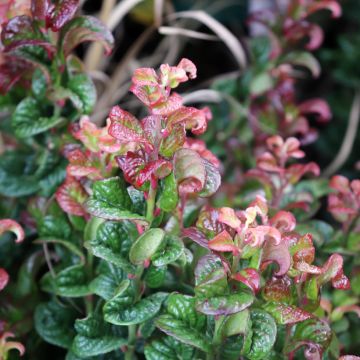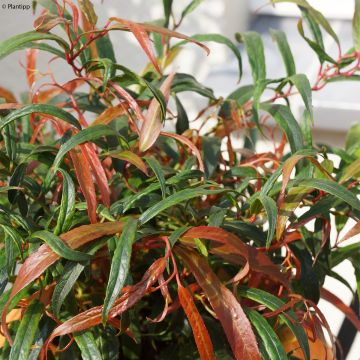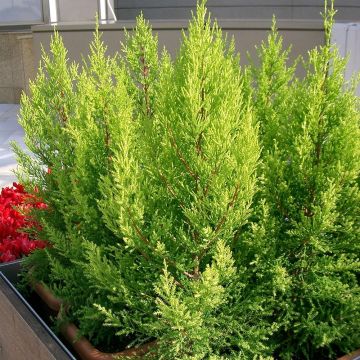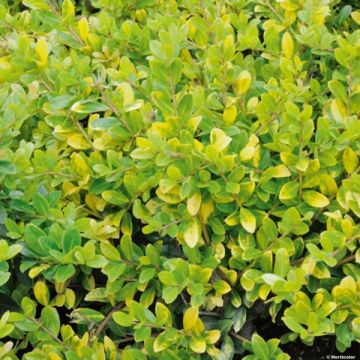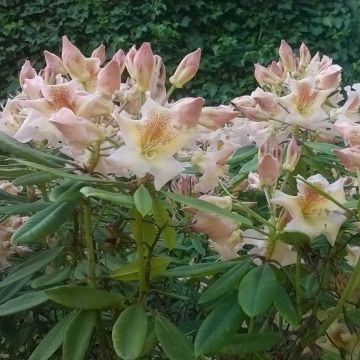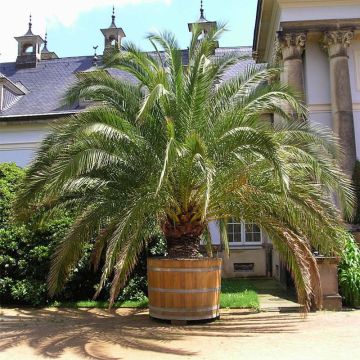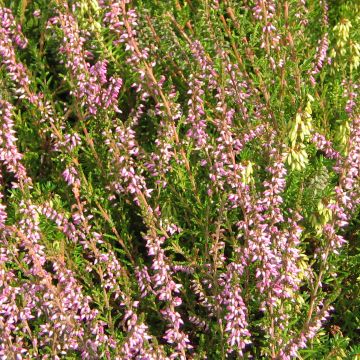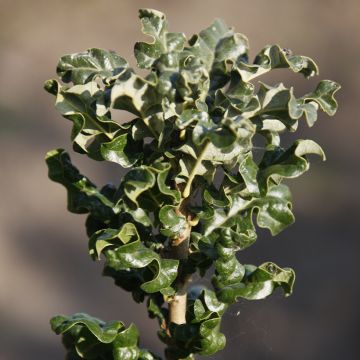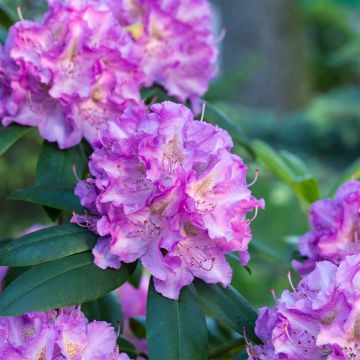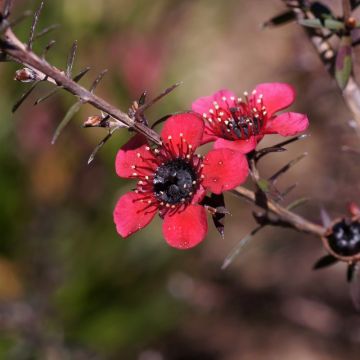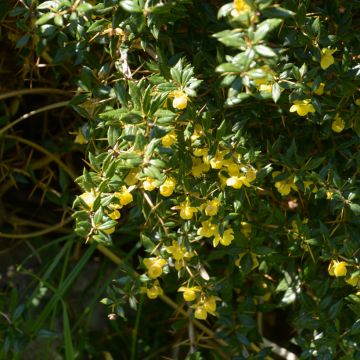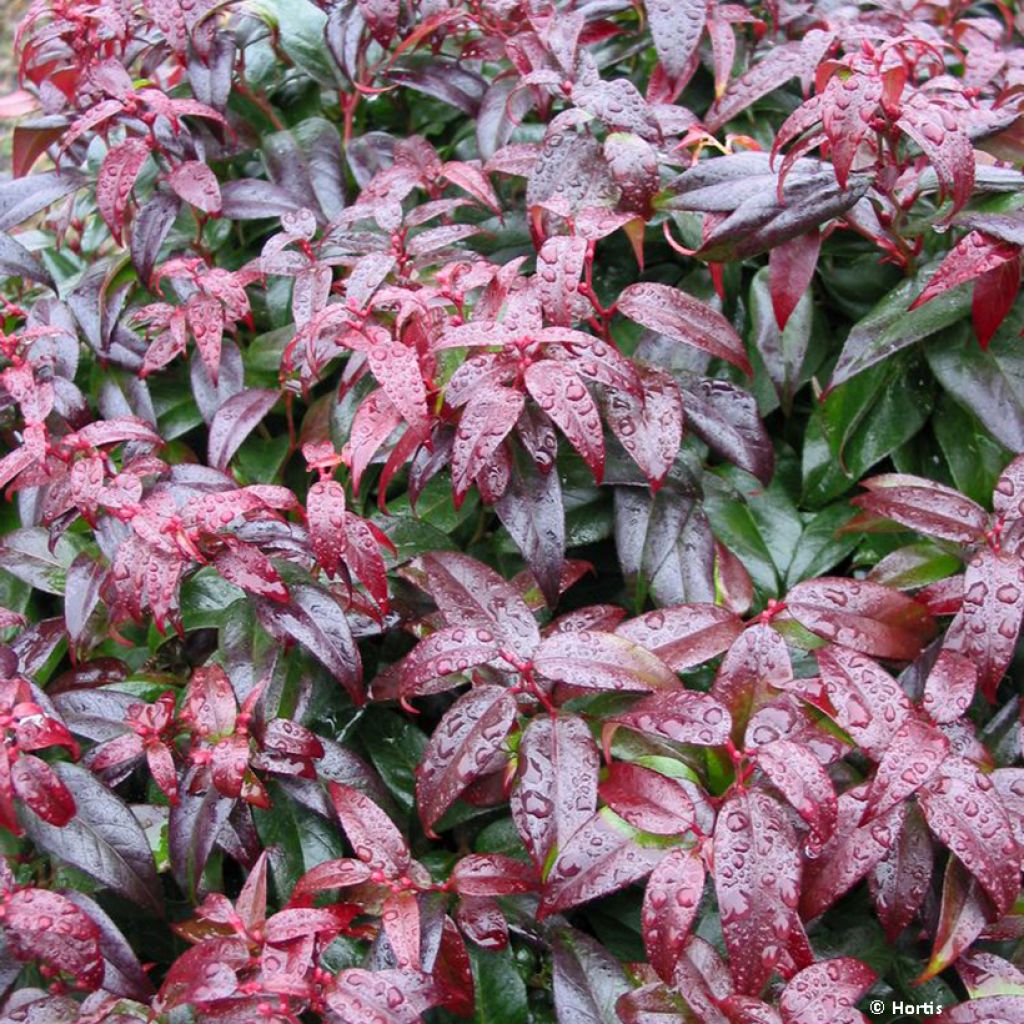

Leucothoe fontesiana Dark Diamond
Leucothoe fontanesiana Dark Diamond
Leucothoe fontanesiana Dark Diamond 'BLULE1801'
Drooping Leucothoe, Highland Doghobble, Fetter-bush
This item cannot be shipped to the selected country
Delivery charge from €5.90
More information
Schedule delivery date,
and select date in basket
This plant carries a 24 months recovery warranty
More information
We guarantee the quality of our plants for a full growing cycle, and will replace at our expense any plant that fails to recover under normal climatic and planting conditions.
From €5.90 for pickup delivery and €6.90 for home delivery
Express home delivery from €8.90.
Does this plant fit my garden?
Set up your Plantfit profile →
Description
The Leucothoe fontanesiana 'Dark Diamond' is a recent, particularly compact, year-round decorative variety. It is notable for its thin, shiny foliage that changes colours with the seasons. Red, green, and then purple, the evergreen leaves of this bush never cease to enchant us, making up for its lacklustre flowering. Preferring acidic, humus-rich and fresh soils, it grows in partial or full shade, thus illuminating dark spots in the garden with its colours. It also tolerates pot cultivation very well, on a terrace or balcony, especially due to its good hardiness.
The Leucothoe belongs to the Ericaceae family, particularly rich in ornamental plants, such as heathers, rhododendrons, strawberry trees and pieris. Less known, the Leucothoe genus comprises about ten species that are morphologically quite close to blueberries, and originate from North America and East Asia. The most important are the L. fontanesiana and the L. axillaris which have produced numerous ornamental cultivars.
Dark Diamond is a recent selection from a New Zealand nursery, which appeared on the European market in 2019. It is a bush of reduced dimensions that spontaneously takes on a rounded habit without requiring pruning. After 10 years of cultivation, it ends up reaching about 50 cm (19.7 in) in diameter, forming a ball bristling with short pointed shoots. The leaves, whose lamina is slightly swollen near the petiole and then long acuminate, measure from 6 to 8-10 cm (2.4 to 3.1 in) and 2-3 cm (0.8-1.2 in) wide. Arranged alternately on the branches, borne by a short petiole, they are very numerous and form a beautiful mass of vegetation, shiny due to their varnished surface. When they emerge in spring, the young shoots are coloured bright red, making this plant truly attractive. Their colour then gradually turns to a dark green, which serves as a setting for the new leaves that continue to emerge during the season. The contrast is then magnificent in season and makes one forget the rather insignificant flowering, in small clusters of white bells around April-May. It is recommended to remove the faded inflorescences to prevent the plant from exhausting itself in forming fruits, and instead encourage the appearance of new bright red shoots. In autumn, the foliage changes again to take on an entirely purple colouration, which it will keep until spring.
Sharing the same needs as the other Leucothoe, 'Dark Diamond' needs a non-limestone, neutral and even slightly acidic soil if possible. It grows well in fresh humus-rich soil, and fears drought which damages its foliage and can cause entire branches to perish. That's why, although it can grow in the sun in a cool climate, it is often preferable to plant it in partial shade to limit the drying effects of the sun. It will also need to be watered in summer to prevent the roots from suffering from dryness. It also holds up under more intense shade, but its foliage will then be less colourful, which would be a pity, since this is truly its main asset. Very hardy, down to about -23°C (-9.4 °F) or even less, this bush is well suited to pot cultivation due to its compact habit, and also because its roots are not very sensitive to frost. Generally free of diseases, and not requiring pruning, it is a low-maintenance plant and ornamental year-round.
This Leucothoe will delight lovers of decorative foliage and proves with panache that evergreen does not rhyme with boring. Its colour variations make it a little gem for the garden, as well as for enhancing a terrace or even a balcony, given its small size. In the ground, it will be perfect as a border plant, or at the foot of trees, especially those with decorative bark. Thus, it will form a magnificent contrast in front of the trunk of a Chinese Birch such as the Betula albosinensis Fascination, whose name is not unjustified, so beautiful is its whitish bark in spring and then a warm coppery hue. Autumn will also be a great moment, when this tree turns yellow while the Leucothoe will have taken its burgundy red to purple livery. You can also happily associate it with other low bushes like the Sarcococcas, with fragrant winter flowerings, as well as with Hellebores.
Report an error about the product description
Leucothoe fontanesiana Dark Diamond in pictures
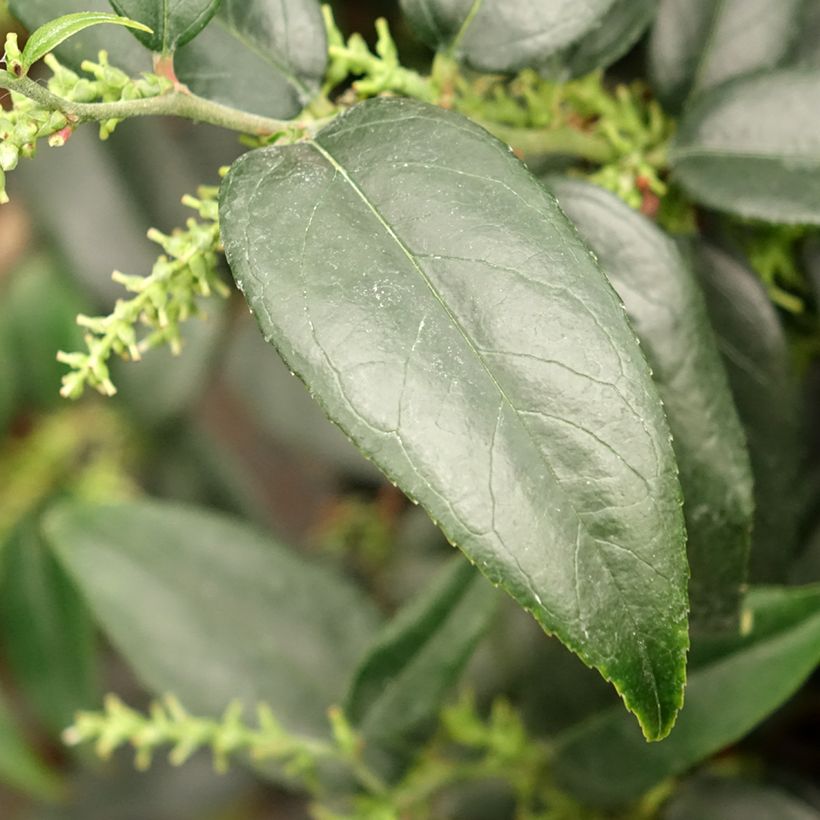

Plant habit
Flowering
Foliage
Botanical data
Leucothoe
fontanesiana
Dark Diamond 'BLULE1801'
Ericaceae
Drooping Leucothoe, Highland Doghobble, Fetter-bush
Cultivar or hybrid
Other Leucothoe
Planting and care
Place the Leucothoe fontanesiana 'Dark Diamond' in the shade or semi-shade in a fresh, humus-rich, acidic to neutral soil. Like all heathland plants, it cannot tolerate limestone soils, heavy soils, or being waterlogged in winter. Hot and dry summers do not suit it at all. Dig a hole three times larger than the pot. Soak the root ball in water and plant the bush at the level of the collar, in a compound mixture of well decomposed leaf compost, gravel or pozzolana and ericaceous soil. Water generously and keep the soil fresh in summer, by placing a mulch on its base for example.
Planting period
Intended location
Care
This item has not been reviewed yet - be the first to leave a review about it.
Evergreen shrubs
Haven't found what you were looking for?
Hardiness is the lowest winter temperature a plant can endure without suffering serious damage or even dying. However, hardiness is affected by location (a sheltered area, such as a patio), protection (winter cover) and soil type (hardiness is improved by well-drained soil).

Photo Sharing Terms & Conditions
In order to encourage gardeners to interact and share their experiences, Promesse de fleurs offers various media enabling content to be uploaded onto its Site - in particular via the ‘Photo sharing’ module.
The User agrees to refrain from:
- Posting any content that is illegal, prejudicial, insulting, racist, inciteful to hatred, revisionist, contrary to public decency, that infringes on privacy or on the privacy rights of third parties, in particular the publicity rights of persons and goods, intellectual property rights, or the right to privacy.
- Submitting content on behalf of a third party;
- Impersonate the identity of a third party and/or publish any personal information about a third party;
In general, the User undertakes to refrain from any unethical behaviour.
All Content (in particular text, comments, files, images, photos, videos, creative works, etc.), which may be subject to property or intellectual property rights, image or other private rights, shall remain the property of the User, subject to the limited rights granted by the terms of the licence granted by Promesse de fleurs as stated below. Users are at liberty to publish or not to publish such Content on the Site, notably via the ‘Photo Sharing’ facility, and accept that this Content shall be made public and freely accessible, notably on the Internet.
Users further acknowledge, undertake to have ,and guarantee that they hold all necessary rights and permissions to publish such material on the Site, in particular with regard to the legislation in force pertaining to any privacy, property, intellectual property, image, or contractual rights, or rights of any other nature. By publishing such Content on the Site, Users acknowledge accepting full liability as publishers of the Content within the meaning of the law, and grant Promesse de fleurs, free of charge, an inclusive, worldwide licence for the said Content for the entire duration of its publication, including all reproduction, representation, up/downloading, displaying, performing, transmission, and storage rights.
Users also grant permission for their name to be linked to the Content and accept that this link may not always be made available.
By engaging in posting material, Users consent to their Content becoming automatically accessible on the Internet, in particular on other sites and/or blogs and/or web pages of the Promesse de fleurs site, including in particular social pages and the Promesse de fleurs catalogue.
Users may secure the removal of entrusted content free of charge by issuing a simple request via our contact form.
The flowering period indicated on our website applies to countries and regions located in USDA zone 8 (France, the United Kingdom, Ireland, the Netherlands, etc.)
It will vary according to where you live:
- In zones 9 to 10 (Italy, Spain, Greece, etc.), flowering will occur about 2 to 4 weeks earlier.
- In zones 6 to 7 (Germany, Poland, Slovenia, and lower mountainous regions), flowering will be delayed by 2 to 3 weeks.
- In zone 5 (Central Europe, Scandinavia), blooming will be delayed by 3 to 5 weeks.
In temperate climates, pruning of spring-flowering shrubs (forsythia, spireas, etc.) should be done just after flowering.
Pruning of summer-flowering shrubs (Indian Lilac, Perovskia, etc.) can be done in winter or spring.
In cold regions as well as with frost-sensitive plants, avoid pruning too early when severe frosts may still occur.
The planting period indicated on our website applies to countries and regions located in USDA zone 8 (France, United Kingdom, Ireland, Netherlands).
It will vary according to where you live:
- In Mediterranean zones (Marseille, Madrid, Milan, etc.), autumn and winter are the best planting periods.
- In continental zones (Strasbourg, Munich, Vienna, etc.), delay planting by 2 to 3 weeks in spring and bring it forward by 2 to 4 weeks in autumn.
- In mountainous regions (the Alps, Pyrenees, Carpathians, etc.), it is best to plant in late spring (May-June) or late summer (August-September).
The harvesting period indicated on our website applies to countries and regions in USDA zone 8 (France, England, Ireland, the Netherlands).
In colder areas (Scandinavia, Poland, Austria...) fruit and vegetable harvests are likely to be delayed by 3-4 weeks.
In warmer areas (Italy, Spain, Greece, etc.), harvesting will probably take place earlier, depending on weather conditions.
The sowing periods indicated on our website apply to countries and regions within USDA Zone 8 (France, UK, Ireland, Netherlands).
In colder areas (Scandinavia, Poland, Austria...), delay any outdoor sowing by 3-4 weeks, or sow under glass.
In warmer climes (Italy, Spain, Greece, etc.), bring outdoor sowing forward by a few weeks.

































